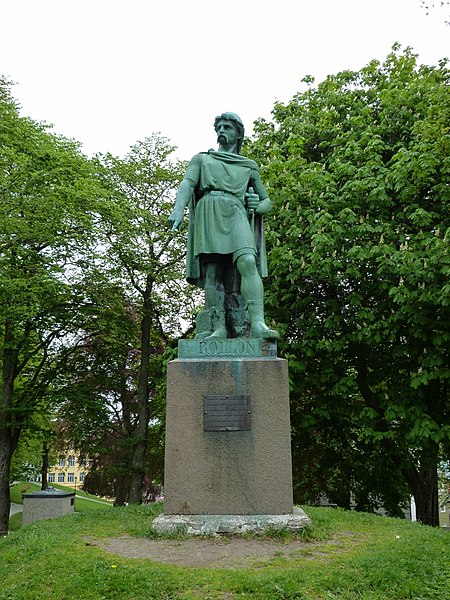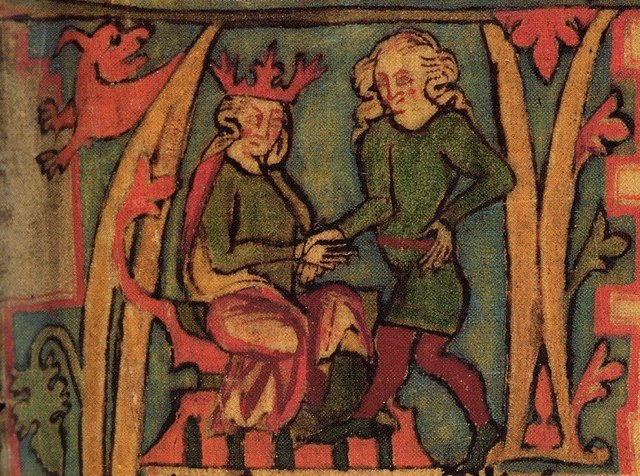The House of Sverre was a royal house or dynasty which ruled, at various times in history, the Kingdom of Norway, hereunder the kingdom's realms, and the Kingdom of Scotland. The house was founded with King Sverre Sigurdsson. It provided the rulers of Norway from 1184 to 1319.
A sculpture believed to be of King Haakon V Magnusson as Duke of Oslo, Oppland, Ryfylke, the Faroe Islands, and Shetland.
Burial site of Haakon V Magnusson in Oslo.
Seal of King Haakon V Magnusson, the last king belonging to the House of Sverre.
Seal of King Haakon V Magnusson's daughter, Duchess Ingeborg.
Kingdom of Norway (872–1397)
The term Norwegian Realm and Old Kingdom of Norway refer to the Kingdom of Norway's peak of power at the 13th century after a long period of civil war before 1240. The kingdom was a loosely unified nation including the territory of modern-day Norway, modern-day Swedish territory of Jämtland, Herjedalen, Ranrike (Bohuslän) and Idre and Särna, as well as Norway's overseas possessions which had been settled by Norwegian seafarers for centuries before being annexed or incorporated into the kingdom as 'tax territories'. To the North, Norway also bordered extensive tax territories on the mainland. Norway, whose expansionism starts from the very foundation of the Kingdom in 872, reached the peak of its power in the years between 1240 and 1319.
Norway at its greatest extent, around 1263
Statue of Rollo in Ålesund, Norway.
Haraldr Halfdansson, first monarch of the Fairhair dynasty
Painting of St. Olaf. Located in S. Carlo al Corso in Rome, Italy. – Pius Weloński, Sant'Olav di Norvegia (1893)








